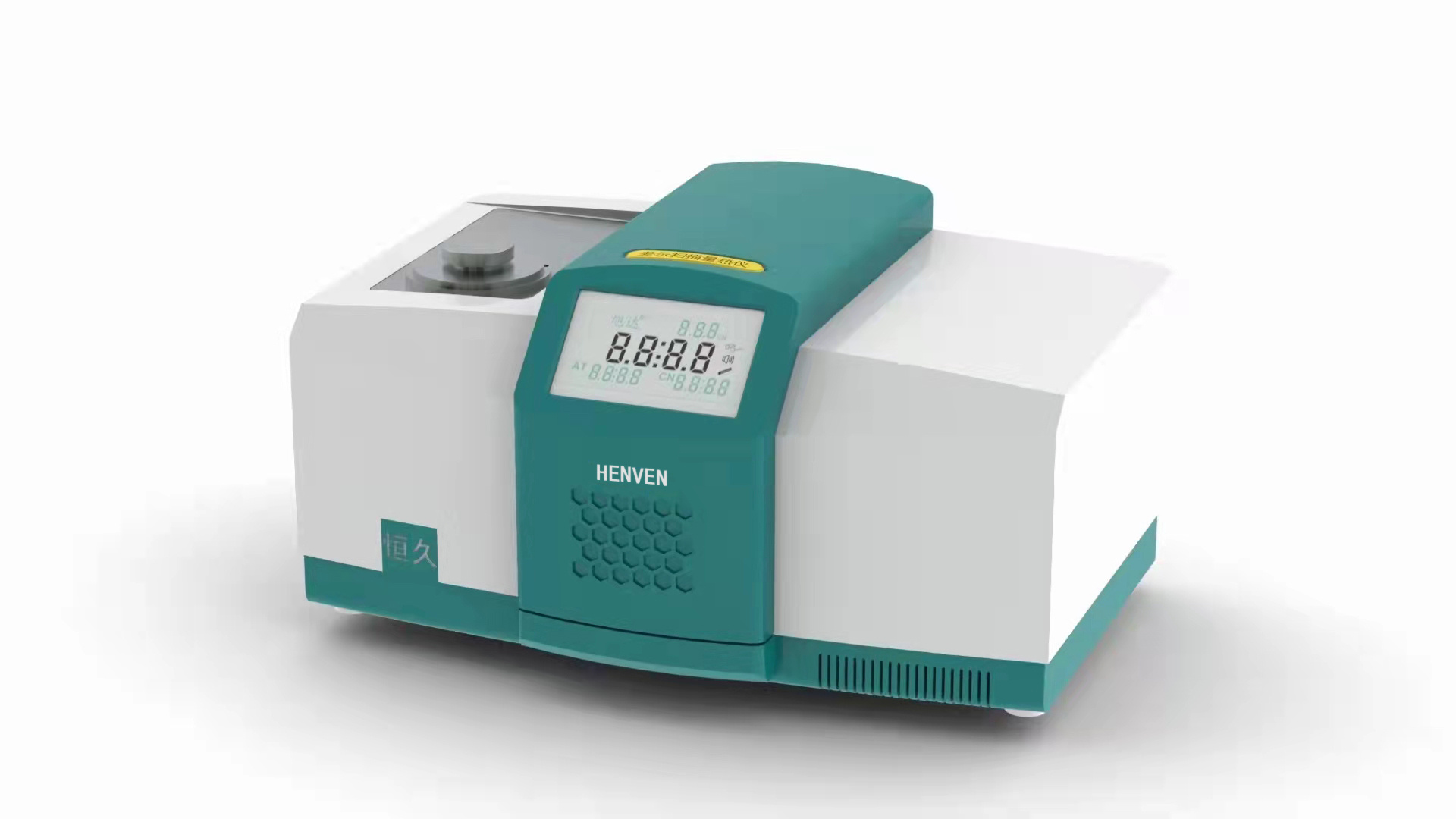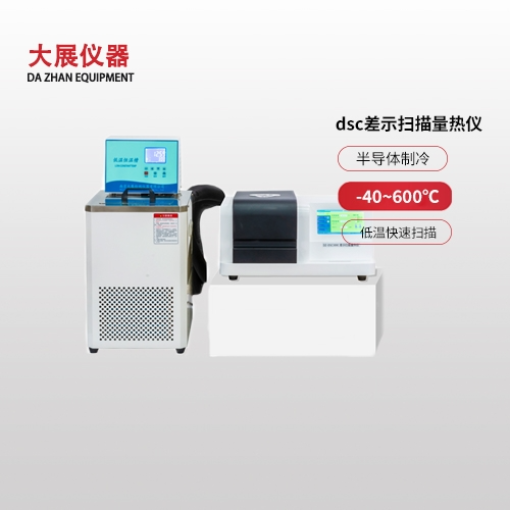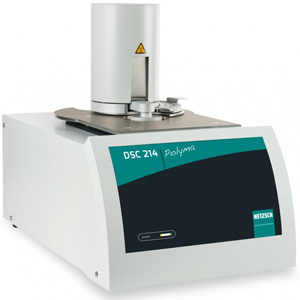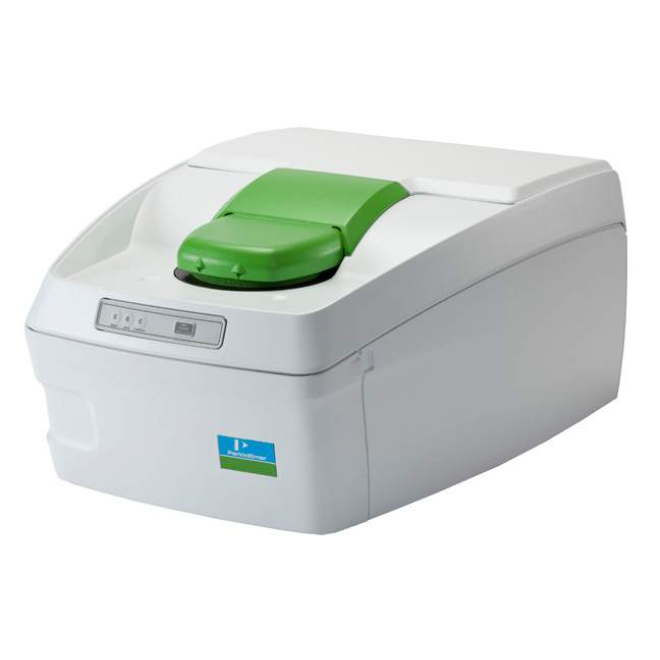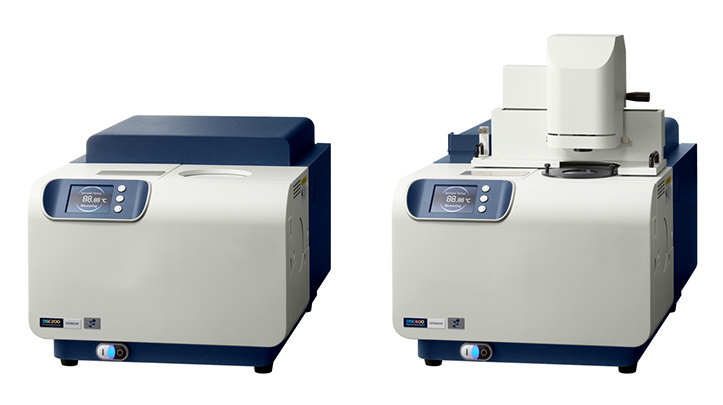方案详情
文
Proteomics research is uncovering a vast array of new proteins, including enzymes. It is now clear that the old assumption that one gene encodes one protein in incorrect. One gene can encode for several proteins, and many proteins have multiple functions: which function is displayed is controlled by the protein’s molecular environment. The structure and function of a protein are controlled by interactions with macromolecules such as other proteins, nucleic acids and lipids. Studying a protein in isolation (for example, obtaining the crystal or NMR structure of a purified protein) is critical to establishing a structural basis for the protein’s function(s). However, true functional characterization of the protein generally requires manipulation of multi-component systems under stringently-controlled conditions, and evaluating the roles of the physical characteristics of the protein. Proteomics has highlighted the need for a technique that can quantify the interactions between molecules under physiologically-relevant conditions.
方案详情

Life Science Applications of ITCOverview Note Christin T. Choma TA Instruments, 109 Lukens Drive,New Castle, DE 19720, USA roteomics research is uncovering a vast arrayPof new proteins,including enzymes. It is nowclear that the old assumption that one geneencodes one protein is incorrect. One gene canencode for several proteins, and many proteins havemultiple functions: which function is displayed iscontrolled by the protein's molecular environment.The structure and function of a protein are controlledby interactions with small molecule ligands andcofactors, and by interactions with macromoleculessuch as other proteins, nucleic acids and lipids.Studying a protein in isolation (for example,obtainingthe crystal or NMR structure of a purified protein)is critical to establishing a structural basis for theprotein's function(S). However, truefunctionalcharacterization of the protein generally requiresmanipulation of multi-component systems understringently-controlled conditions,and evaluating theroles of the various components in regulating andtuning the physical characteristics of the protein.Proteomics has highlighted the need for a techniquethat can quantify the interactions between moleculesunder physiologically-relevant conditions. Isothermaltitrationn calorimetry(ITC)is auniversally-applicable technique for determining thethermal effects arising from molecularinteractions. Forlife scientists, ITC is a particularly powerful approachfor quantifying molecular interactions betweentwo or more proteins or other macromolecules, ora protein and small molecule ligands such as drugsor enzyme inhibitors. Since nearly every reaction isaccompanied by the absorption or evolution of heat,most reactions, often requiring only nanomoles ofmaterial, can be studied using calorimetry. Thereis no requirement for chromophores,fluorophores, opticaltransparency, chemical nmodificationnorimmobilization, and since the measurement ofheat is independent of the complexity of thesample, impurities in the sample are tolerated. Thisintroductory note provides an overview of the typesof biophysical questions that can be addressed usingITC, and briefly describes how a typical experiment isperformed and the data interpreted. Applications of ITC: Life science applications of ITC can be broadlycharacterized asseeither binding interactions, orenzyme-substrate interactions. All the examplesoutlined below can be investigated using the samelTC instrument. Binding interactions: This is perhaps the most frequent use of ITC,where the affinity of one molecule to bind toanother at physiologically-relevant temperatures ischaracterized. In a single titration experiment,ITC canmeasure the binding affinity,the binding enthalpy,andthe stoichiometry with which two compoundsinteract with each other. Common systems studiedby ITC include: ● Protein/Ligand Binding Protein/Protein Interactions ● Biopolymer/Drug Binding Lipid Vesicle and Liposome Interactions Calorimetry doess rnot)t dcistinguishh the ssizeor function of molecules, so the assignment of"ligand" "macromolecule""drug" "receptor" or othernomenclature is purely arbitrary, and is solely for the convenience of the experimenter. Thus, all theinteractions listed above would be studied using similarapproaches. To determine the affinity with which, forexample, a protein binds a small ligand (e.g., a drugcandidate),a solution of the protein (1 mL of an approx.10 uM solution) is loaded into the calorimeter samplecell, and the ligand solution (approx. 100 uL) is loadedinto an injector syringe connected to the sample cell.Theligand is titrated incrementally into the protein sample,and heat is generated and registered as a deflection peakby the instrument. Integration of the area under eachdeflection peak allows the amount of heat producedby each addition of ligand to be calculated, until theprotein is saturated with ligand and no further bindingis detected. A typical, fully-automated ITC experimenttakes about one hour to run. Using the 'Bindworks'software supplied by CSC, a global fit of the data from asingle titration experiment is often sufficient to allow theassociation constant (K), the binding enthalpy (^H) andthe stoichiometry (n) of the reaction to be calculated. Drug binding to DNA, RNA and polysaccharidescan all be studied in an analogous manner, as canprotein/protein interactions (with the second proteintaking the place of the small molecule ligand in thesyringe). Importantly, for any of these applications,conducting titration experiments with two different pHbuffers (having the same pH but different enthalpiesof protonation) allows the number of protonsexchanged between the ligand and the binding siteto be determined. This provides information on whichfunctional groups are involved in the binding reaction. Enzyme/substrate interactions: Enzymes drive every biochemical pathway andcan exhibit different catalytic functions depending onthe physiological state of the organism. For this reason,enzymes are implicated in practically every disease andare therefore increasingly important targets for drugs.ITC can rapidly analyze essentially any enzymaticreaction, using a wide range of physiological orsynthetic substrates and inhibitors, without the need for chromogenic derivatives or coupling enzymes.Additionally, since the observed thermal signal is directlyproportional to the rate of the reaction, data analysis isstraightforward. To determine the rate of catalysis, enzyme is loadedinto the calorimeter's sample cell, and the substrate,dissolved in the same buffer as the enzyme, is loadedinto the injector syringe. Appropriate concentrations ofsubstrate and enzyme will vary depending on the exactreaction being studied, but generally concentrations arein the order of 1-20 nMenzyme and 10-100 uM substrate.Approximately 25pL of substrate is injected, and the rateof heat production is monitored continuously until thesubstrate is depleted. Using software supplied withthe instrument, the data are plotted (rate vs. substrateconcentration) and fit to yield the catalytic rate constant(k) and the Michaelis constant (K).The experiment canbe repeated by injecting a second aliquot of substrate.If there is no product inhibition, the same curve will beobtained;if there is product inhibition, its severity can bedetermined over the course of several injections.Using avariation of this approach,pseudo-first-orderkinetics canbe studied, using multiple small injections of substrate. Summary: In summary, ITC is a universally-applicable techniquethat has two major life science applications: first, forstudying binding interactions between, for example,proteins and drugs,or ligands and receptors,and second,for quantifying rates of enzymatic catalysis and productor drug inhibition. Experiments are rapid (typicallyrequiring an hour or so of unattended operation),samplederivatization is not required, impurities are tolerated,and often only nanomoles of the target macromoleculeare required. For further details regarding applications to lifescience research, please refer to CSC's applicationnotes Characterizing binding reaction;s by ITC'and 'Characterizing enzyme kinetics by ITC. Pleasecontact us by phone at 801.763.1500, or by email atinfo@calscorp.com. M
确定
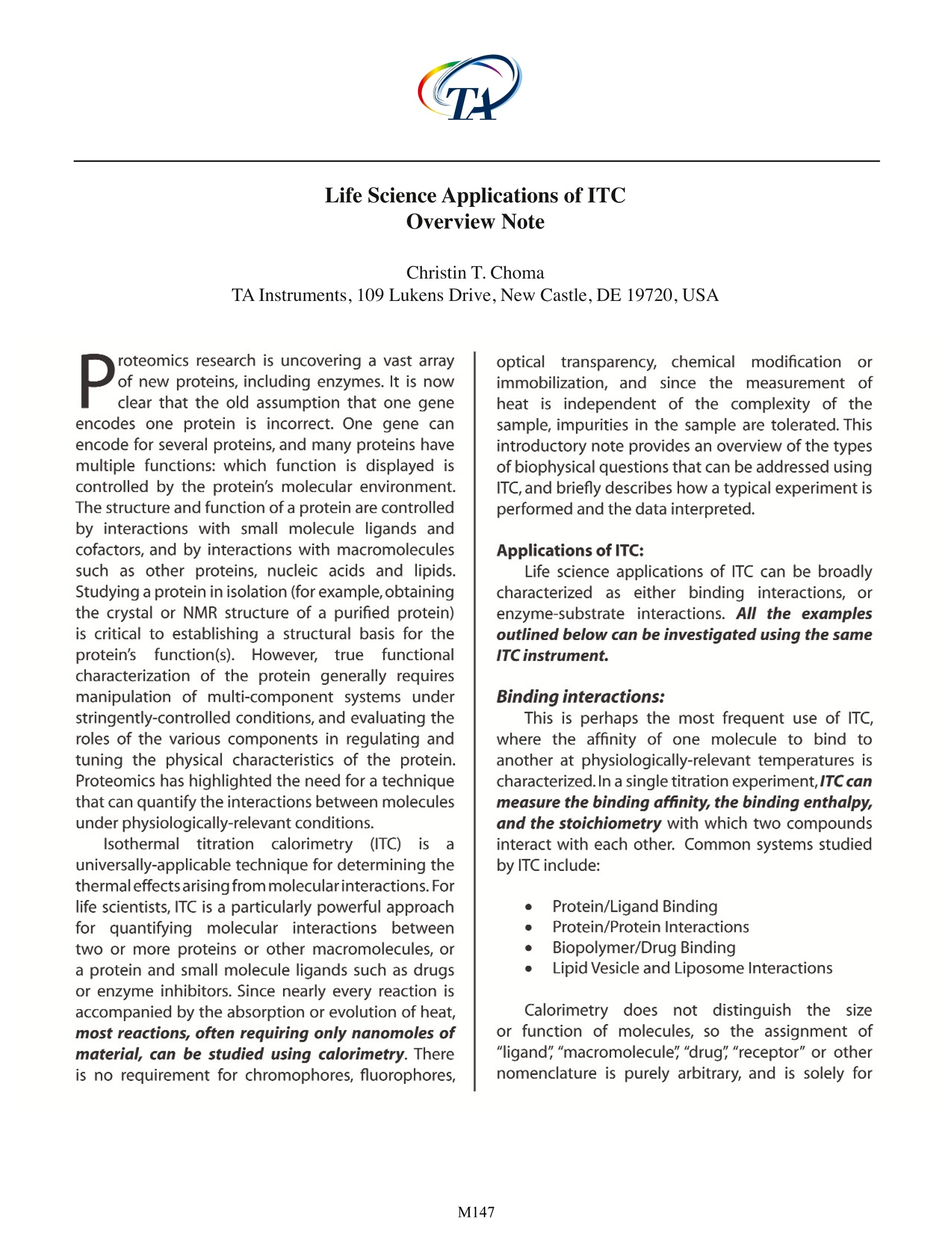
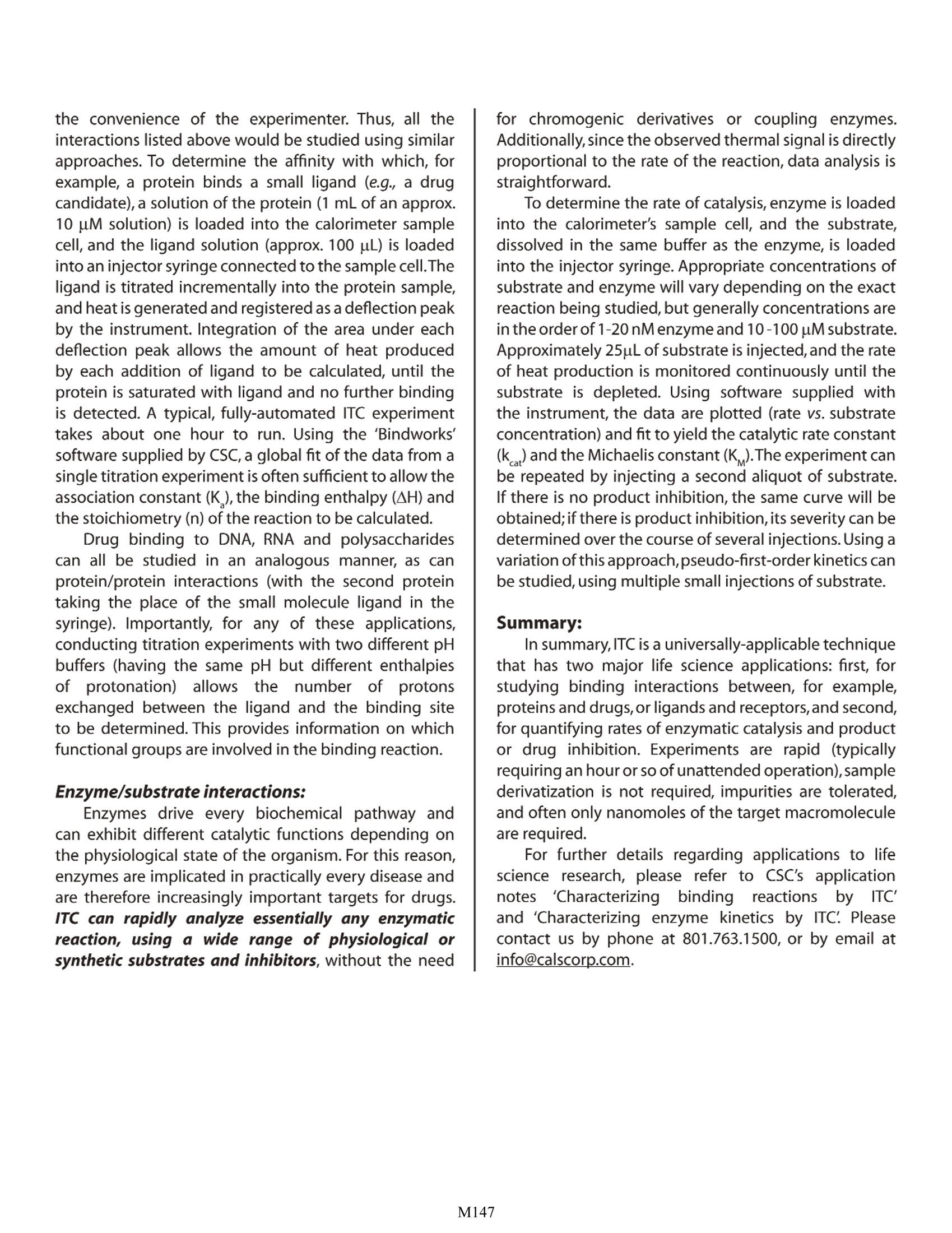
还剩1页未读,是否继续阅读?
TA仪器为您提供《生命科学中ITC应用检测方案(差示扫描量热)》,该方案主要用于其他中ITC应用检测,参考标准--,《生命科学中ITC应用检测方案(差示扫描量热)》用到的仪器有TA仪器+等温滴定微量热仪+ NANO ITC
推荐专场
相关方案
更多
该厂商其他方案
更多











